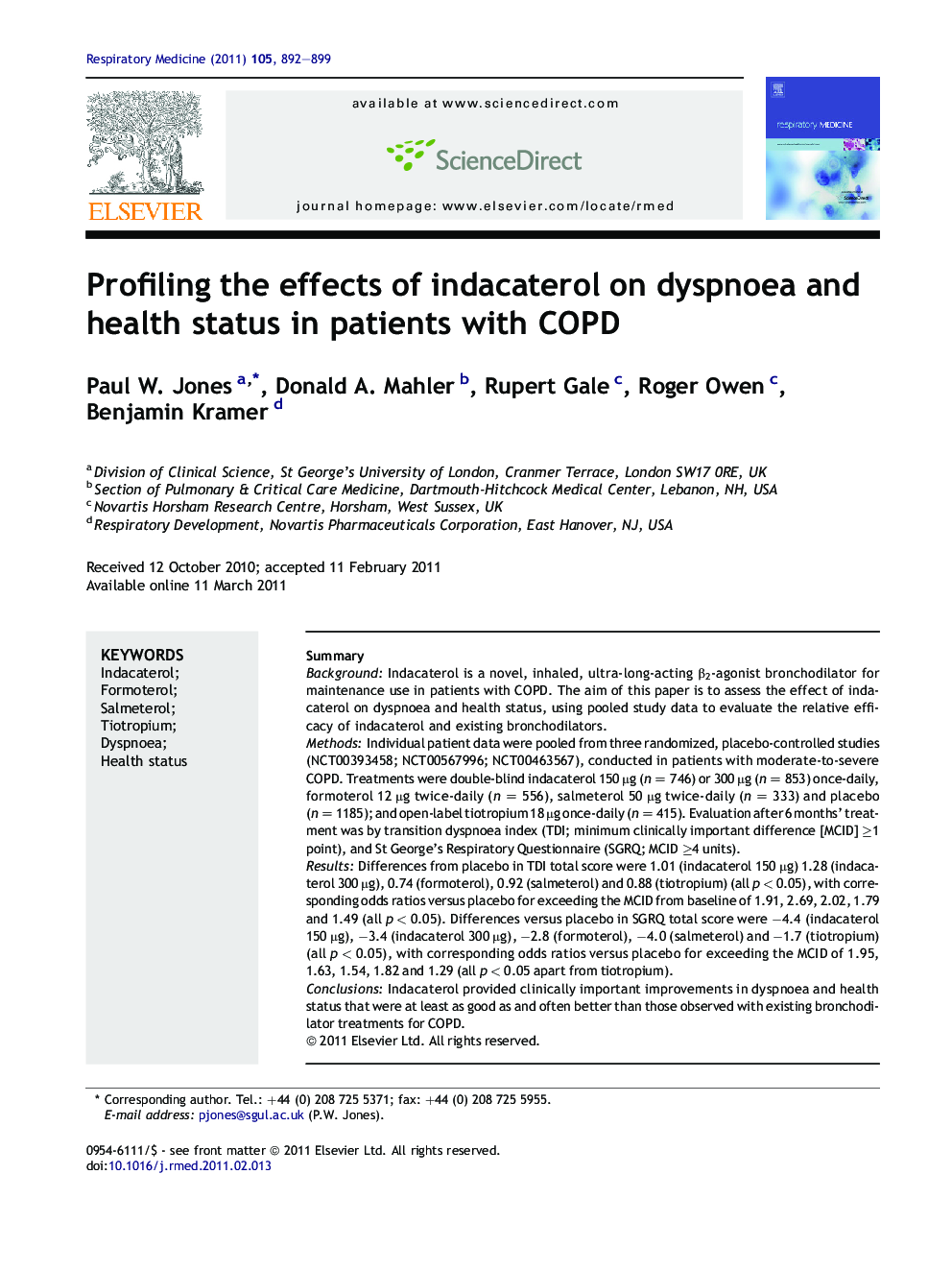| Article ID | Journal | Published Year | Pages | File Type |
|---|---|---|---|---|
| 4210366 | Respiratory Medicine | 2011 | 8 Pages |
SummaryBackgroundIndacaterol is a novel, inhaled, ultra-long-acting β2-agonist bronchodilator for maintenance use in patients with COPD. The aim of this paper is to assess the effect of indacaterol on dyspnoea and health status, using pooled study data to evaluate the relative efficacy of indacaterol and existing bronchodilators.MethodsIndividual patient data were pooled from three randomized, placebo-controlled studies (NCT00393458; NCT00567996; NCT00463567), conducted in patients with moderate-to-severe COPD. Treatments were double-blind indacaterol 150 μg (n = 746) or 300 μg (n = 853) once-daily, formoterol 12 μg twice-daily (n = 556), salmeterol 50 μg twice-daily (n = 333) and placebo (n = 1185); and open-label tiotropium 18 μg once-daily (n = 415). Evaluation after 6 months' treatment was by transition dyspnoea index (TDI; minimum clinically important difference [MCID] ≥1 point), and St George’s Respiratory Questionnaire (SGRQ; MCID ≥4 units).ResultsDifferences from placebo in TDI total score were 1.01 (indacaterol 150 μg) 1.28 (indacaterol 300 μg), 0.74 (formoterol), 0.92 (salmeterol) and 0.88 (tiotropium) (all p < 0.05), with corresponding odds ratios versus placebo for exceeding the MCID from baseline of 1.91, 2.69, 2.02, 1.79 and 1.49 (all p < 0.05). Differences versus placebo in SGRQ total score were −4.4 (indacaterol 150 μg), −3.4 (indacaterol 300 μg), −2.8 (formoterol), −4.0 (salmeterol) and −1.7 (tiotropium) (all p < 0.05), with corresponding odds ratios versus placebo for exceeding the MCID of 1.95, 1.63, 1.54, 1.82 and 1.29 (all p < 0.05 apart from tiotropium).ConclusionsIndacaterol provided clinically important improvements in dyspnoea and health status that were at least as good as and often better than those observed with existing bronchodilator treatments for COPD.
